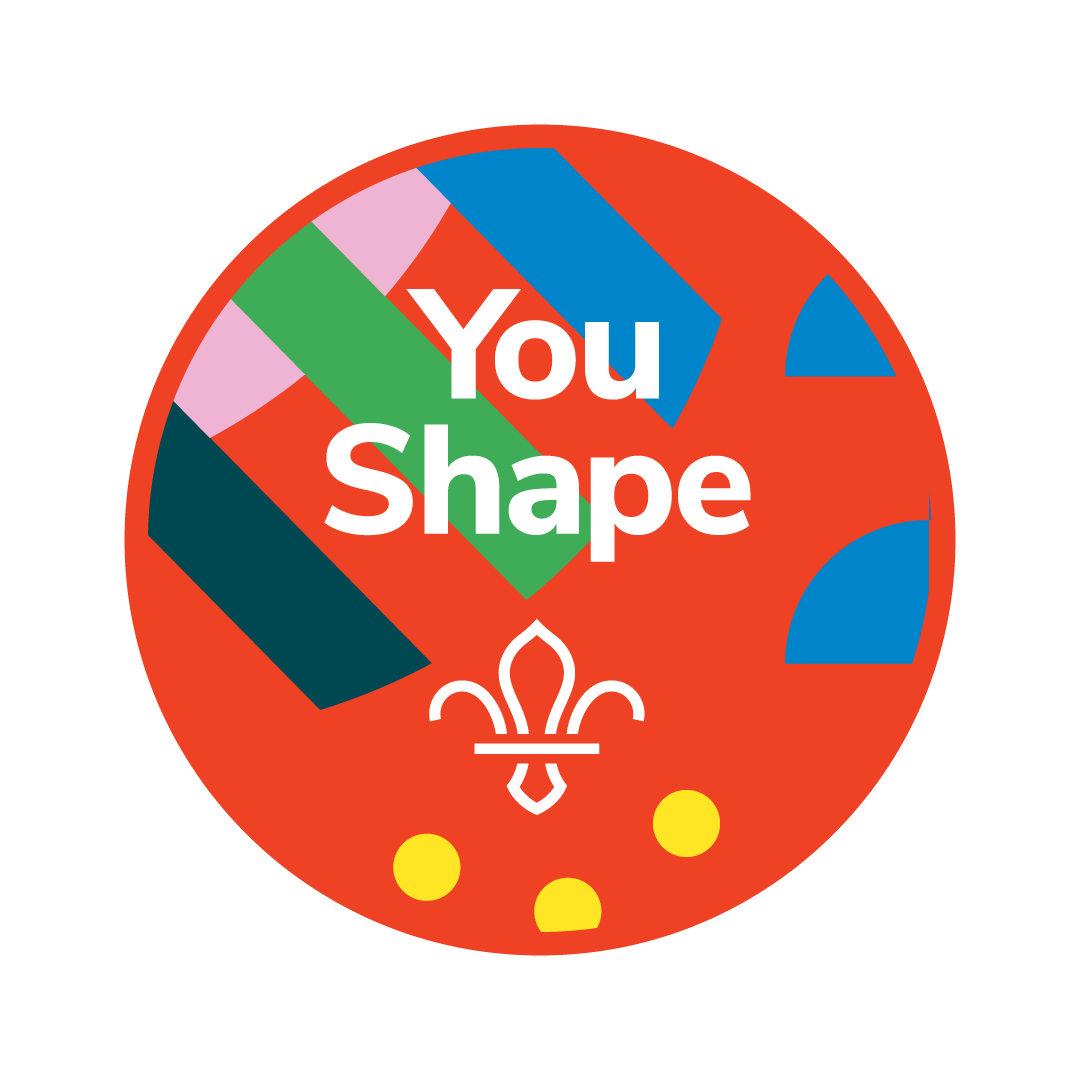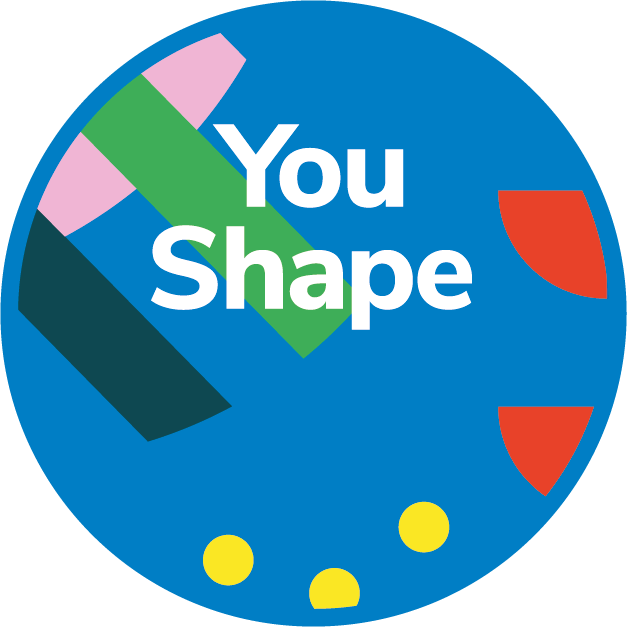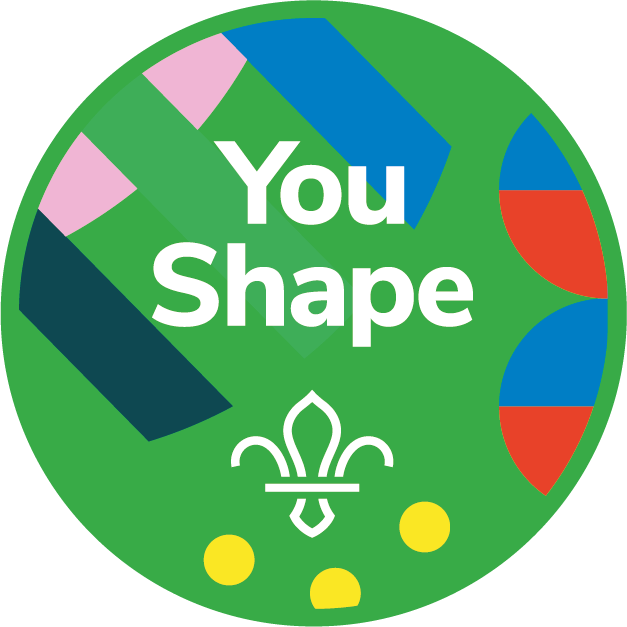
Make a YouShape moodboard
You’ll need
- Craft materials (for example, tissue paper, pipe cleaners, stickers)
- Coloured pens or pencils
- Pens or pencils
- Scrap paper
- Glue sticks
Before you begin
- Use the safety checklist to help you plan and risk assess your activity. There's also more guidance to help you carry out your risk assessment, including examples.
- Make sure all young people and adults involved in the activity know how to take part safely.
- Make sure you’ll have enough adult helpers. You may need some parents and carers to help.
Planning and setting up this activity
- Print out copies of the cards, which can be found on this page.
- There’s space on the cards to add additional words if you want to, but make sure the words are written in the same colour as to what’s already on the cards. This’ll be either blue or green, depending on the question.
- Hide the cards around the space before the meeting. Make sure they’re accessible to everyone in the group and well spread out, so there’s not too many of the same colour placed close together.
- You can use this activity for the YouShape award, which is all about young people bringing their ideas to Scouts.
- We know that Squirrel Dreys introduce the session with a story. We’d suggest using ‘What We'll Build’ by Oliver Jeffers, a story about building a future.
Running this activity
What do you like about Scouts?
- Gather everyone together and explain that they’ll be thinking about what they like about Scouts, how Scouts activities make them feel, what skills they've learned at Scouts, and if there’s anything that they’d like to do, want to change or want to improve.
- Ask everyone to get into small groups and ask each group to find a space or sit around a table.
- Give out the craft supplies and divide them between each group.
- Using the craft supplies that they’ve been given, each group should create a mood board that represents what the best thing about Scouts is to them. You should give them around 10 minutes or so to complete this. They may also want to represent their mood board in different ways, such as a collage, a sculpture or as digital artwork.
- Once the group have finished, they should add a short description to the piece of work to explain what it is and what different bits mean or represent. A young leader or adult volunteer could help people to write down their answers as the group talk them through the work.
- Once people have finished their creations, everyone can then tidy up the space and put their work to one side.
What do you get out of Scouts?
- Gather everyone back together. Explain that there are words hidden around the space and everyone needs to find them. Give the group time to find all the answers.
- Once all green and blue cards have been found, put them into two piles, Green and Blue, then spread them out, either on the floor or on two tables.
- Tell everyone that these are the answers to the questions, but people can add more answers using blank cards if needed.
- You may want to have multiple sets of cards, with people answering the next questions in smaller groups.
- Ask ‘What do you get out of Scouts?’. Using the blue cards, everyone should put them in order of what they think is most important to least important.
- Now, using the green cards, ask ‘What could make Scouts better?’ and people should again rank them from most to least important.
- Once all cards have been ordered, ask people how they came to that decision or discuss if anyone disagrees with the top three answers.
What could make Scouts better?
- Using these new ideas, create a second craft piece with the theme of ‘What could make Scouts better?’
- Again, divide out the craft supplies between each group.
- Using the craft supplies that they’ve been given, each group should create a mood board. You should give them around 10 minutes or so to complete this. They may also want to represent their mood board in different ways, such as a collage, a sculpture or as digital artwork.
- Once everyone has completed their creations, you may want to chat through what people have made or included too.
Reflection
This activity was all about being creative to share what you like and would change about Scouts. What did you include on both your moodboards? How did you decide what to include? What did you say you liked about Scouts? And what do you want to do more of or change in the future? How did you answers compare to another groups?
You also had to find some words to describe Scouts. How did you work together to find all the cards? Did you agree with all the cards? How did you find ranking the cards? Did you make sure everyone could share their ideas? And did you agree with the final ranking? If not, what would you change?
Safety
All activities must be safely managed. You must complete a thorough risk assessment and take appropriate steps to reduce risk. Use the safety checklist to help you plan and risk assess your activity. Always get approval for the activity, and have suitable supervision and an InTouch process.
- Scissors
Supervise young people appropriately when they’re using scissors. Store all sharp objects securely, out of the reach of young people.
- Glue and solvents
Always supervise young people appropriately when they’re using glue and solvent products. Make sure there’s plenty of ventilation. Be aware of any medical conditions that could be affected by glue or solvent use and make adjustments as needed.
- Active games
The game area should be free of hazards. Explain the rules of the game clearly and have a clear way to communicate that the game must stop when needed. Take a look at our guidance on running active games safely.
- To make this activity easier, you could have more answer cards available for people to choose from. You could also give people a template to create their mood board on.
- Provide clear instructions and visual aids, use simple language, and make sure any materials are easy to handle.
- Offer assistance from adult volunteers and allow for alternative methods of participation, such as verbal sharing of ideas instead of writing, to support all needs and abilities.
All Scout activities should be inclusive and accessible.
If you enjoyed this activity, try out another activity to help us shape the future of Scouts or try the YouShape award, which is all about young people bringing their ideas to Scouts.
Young people could see if they can come up with any more ideas, or they could try to plan their dream Scouts term. Can you then do any of these ideas?


